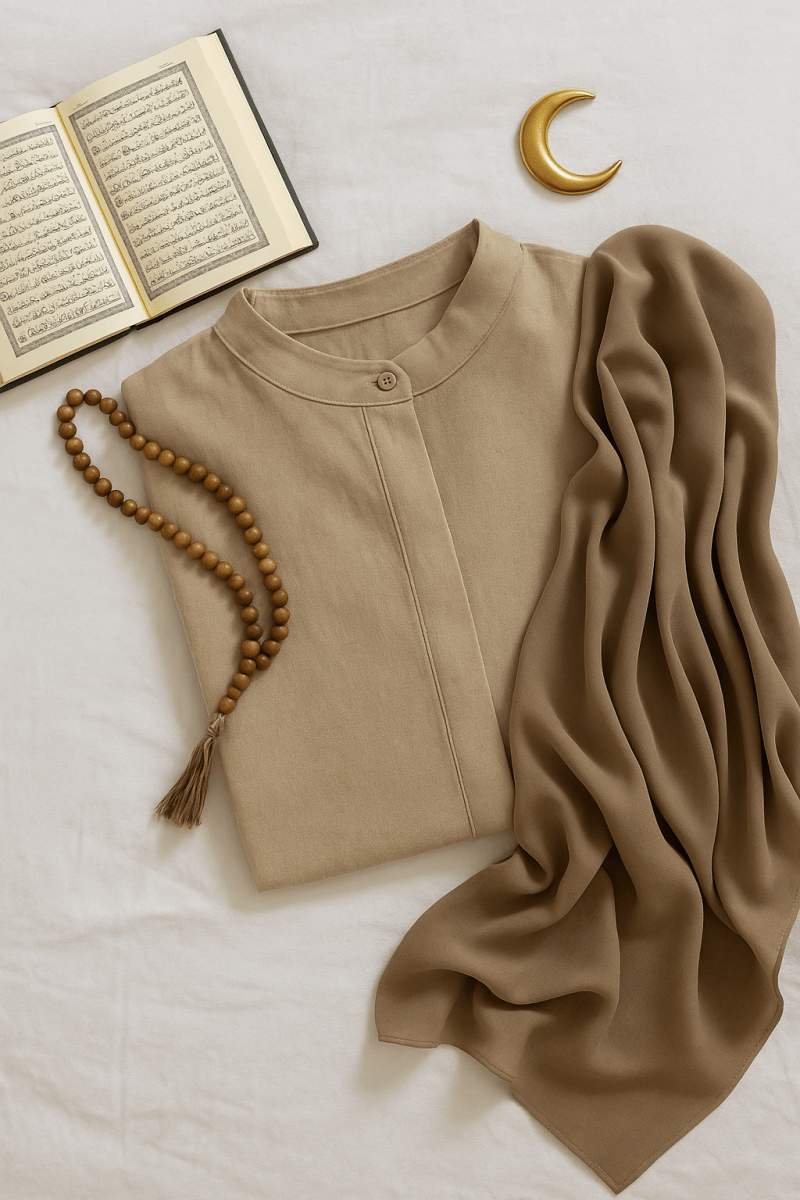
I didn’t always think deeply about what I wore in Ramadan. But over time, I began to realize how much the right abaya could shape my experience — not just in comfort, but in presence.
This month carries a different kind of energy. The pace slows. The soul softens. You begin to notice the weight of small things — a quiet Fajr, the first sip at iftar, the stillness after Taraweeh. And in that stillness, what you wear becomes more than fabric. It becomes part of the rhythm.
An abaya in Ramadan isn’t for others to admire. It’s for you to move freely, pray comfortably, and stay present — whether you’re in the masjid, at home, or walking quietly beneath the stars after breaking your fast.

What to Look for in an Abaya for Ramadan
Not every abaya is meant for Ramadan — and that’s okay. This month asks something different of us.
Ease. Lightness. Breathability. A softness that mirrors the state we’re trying to reach within.
A good abaya doesn’t distract. It doesn’t cling or weigh you down. It lets you move between suhoor and Taraweeh, between reflection and routine — without needing to fix, adjust, or fuss.
Look for fabrics that breathe. Linen for warm nights. Chiffon for that gentle, effortless drape. Nida for stillness and structure. Choose silhouettes that flow — not to hide, but to allow space. And choose colors that help you feel at peace in your own skin.
Because the right abaya in Ramadan should feel like the month itself: light, grounding, and quietly transformative.
5 Moments Your Abaya Should Support This Ramadan
The beauty of Ramadan is in its rhythm — and your abaya should move with that rhythm, not against it. Here are five moments where the right garment does more than cover. It supports you.
1. Early Morning Suhoor
Sleep-heavy eyes. A quiet kitchen. You want something soft, easy to throw on, and gentle against the skin — without thinking.
2. Prayer at Home
Not every prayer happens in a masjid. At home, you want an abaya that gives you coverage without layers. One you can stand in for long rak’ahs, without discomfort.
3. Taraweeh Nights
After iftar, your body is slower. Your heart is fuller. A structured, breathable abaya — ideally in nida or lightweight satin — helps you stay present during long evenings of prayer.
4. Grocery Runs or Charity Errands
These midday moments come with movement. You want an abaya that flows, doesn’t restrict, and still feels dignified and put-together.
5. Moments of Solitude
Whether it's journaling, making dua, or sitting in stillness — what you wear should feel like calm. Modest. Light. Yours.
How to Choose an Abaya That Honors the Month — and Yourself
Not everything beautiful belongs to this month. Ramadan draws us inward — our clothing should do the same. It should settle the body, not pull it outward. Soften the mind, not distract it.
The abaya that stays with you is often the quietest one — the one that disappears once it’s on. No need to adjust. No need to perform. It simply lets you move through your day in peace.
Stillness shows up in details: fabric that breathes before you do, a color that doesn’t compete with your spirit, a silhouette that honors movement without shouting over it.
Clothing won’t make the month sacred. But it can protect the sacredness already unfolding in you (IslamQA: The Prescribed Hijab) — helping you move through each moment with less resistance and more reverence.
Final Reflection: More Than a Garment, A Companion in Worship
By the end of the month, we remember very little of what we wore. But we remember how we felt.
Peaceful. Present. Humbled. Held.
The right abaya for Ramadan doesn’t compete with the moment. It supports it. It becomes something you can return to — not just during prayer, but when your soul needs quiet.
You’ll wear it through nights of Quran, whispered du’as, silent drives after Taraweeh. And even when the month ends, its folds will carry something more — the weight of your intentions.
So choose what reflects your state, not your status. And when you wrap yourself in that garment each day, let it remind you why you began. Let it remind you who you are becoming.
Because this month isn’t just about what you give up — it’s about what you return to. And that return should feel like home.

